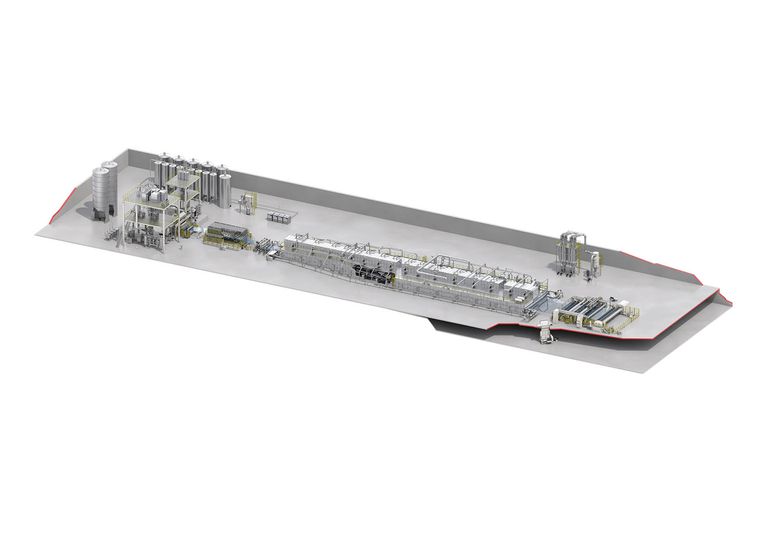DORNIER at the K 2022: focus on energy efficiency and technical film for solar energy
Since film from DORNIER lines is also being used in increasingly demanded solar panels and electric cars, the company's special focus at the K exhibition (19 - 26 October in Düsseldorf) is on innovations for the production of technical film. At the same time, the energy efficiency of existing lines is becoming more and more important in terms of sustainability.In this context, DORNIER will be presenting its first conversion catalogue for existing lines at the K.
"I see solar as the new king of the world's electricity markets," said the chairman of the International Energy Agency (IEA), Fatih Birol, at the presentation of the World Energy Outlook 2020. With this annual publication, the IEA provides forecasts on the world's energy supply. These include the expected expansion figures for photovoltaics - and they speak a clear language: according to the energy agency, global photovoltaic capacity (around 760 gigawatts in 2020 according to Statista) is expected to increase to 5900 gigawatts in 2040. For comparison: The capacity of a nuclear power plant is between 1 and 1.4 gigawatts. The fact that global demand for solar plants is increasing is also noticed by Lindauer DORNIER.
Solar and e-mobility: drivers for technical film
"We are receiving more and more inquiries for film stretching lines for the production of technical film in connection with e-mobility and solar energy," says Bernhard Wandinger, Head of the Product Line Specialty Machines at Lindauer DORNIER. Indeed, film manufacturers have been using the machine builder's equipment to produce technical films for solar panels and lithium-ion batteries for electric cars for some time now. Wandinger explains that this is also due to the MD-relax system in DORNIER's film stretching lines: "Because the shrinkage of the film can be specifically adjusted, it remains stable even under high heat, as it is the case in solar cells and batteries. New is that manufacturers of packaging film are also looking specifically at systems for the production of technical film. The packaging industry recently experienced a boom: "From 2020 onwards, there was a veritable fireworks of investment in our film stretching lines," recalls product line manager Wandinger. One reason: in the wake of the Corona pandemic, demand for packaging increased worldwide as a result of higher hygiene requirements. But because flexibility is more and more becoming a competitive advantage in the face of an increasingly volatile global economic situation, and the need for film for lithium-ion batteries and photovoltaics is rising worldwide, the demand for equipment for technical film is continuously increasing. And because not everyone who wants to switch from packaging to technical film immediately buys a new film stretching line, reports Wandinger, DORNIER also converts existing lines to the production of technical film in individual cases.
Upgrades for more energy efficiency
"In general, the demand for conversions and upgrades of existing film stretching lines has increased significantly recently," says Bernhard Wandinger. One focal point is the topic of energy efficiency. According to Wandinger, a large part of the retrofits is aimed at reducing the energy consumption of older lines. The recent sharp rise in energy prices probably also plays an important role in in this context. One example is air guiding: Because DORNIER has continuously developed its patented transverse stretching machine, which stretches the film in transverse direction in film stretching lines, energy consumption can be reduced by up to 45 % with newer models, according to the company. A few years ago, such upgrading to increase energy efficiency was still a nice-to-have, says Wandinger. Currently, however, the trend is to upgrade even plants that are decades old: "More and more film manufacturers are adapting their existing plants to modern sustainability and climate protection requirements," says Wandinger. In order to be able to better support film manufacturers in the future in converting, modernizing and improving existing plants with targeted upgrades, DORNIER has therefore developed a conversion catalogue in close consultation with film producers. It will be presented to the public for the first time at the K.




